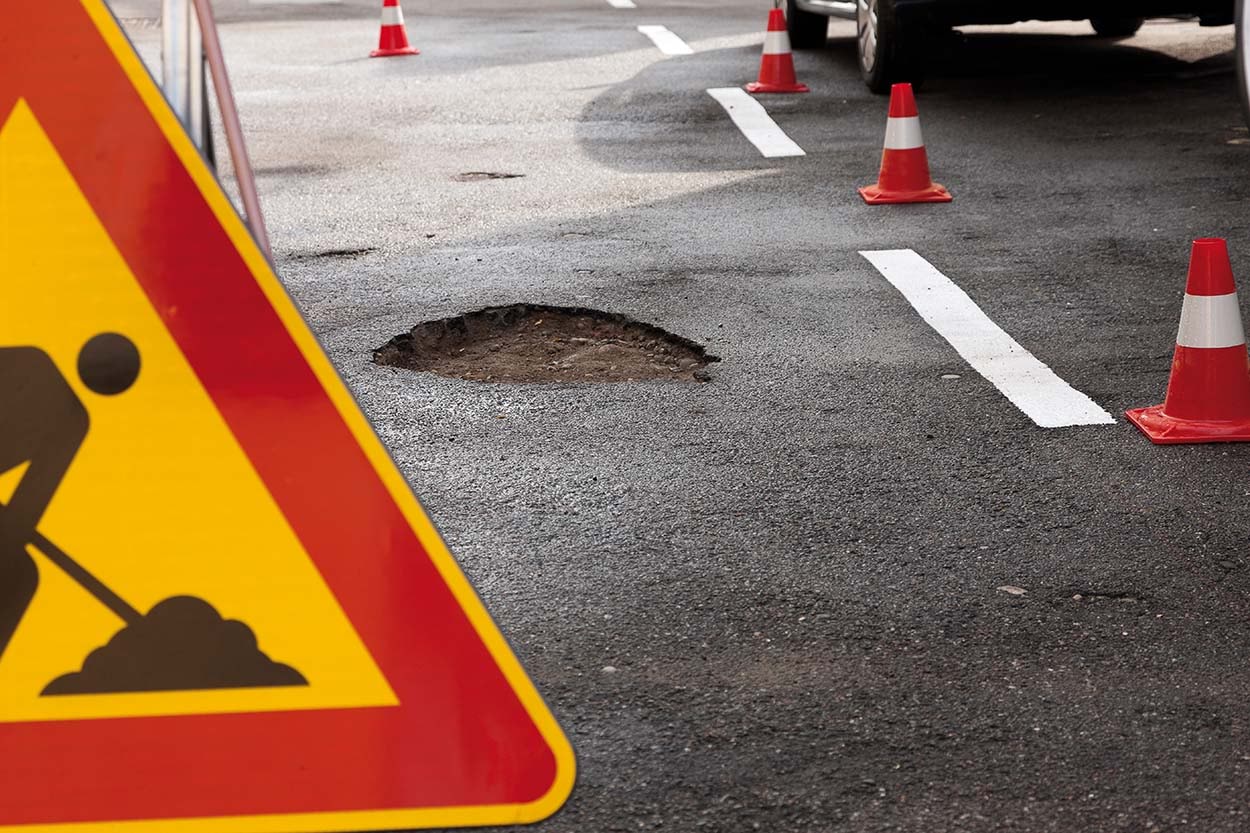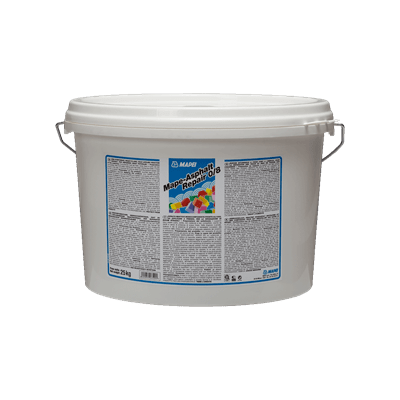
Solve the problem of holes? Yes, we can.
Pot-holes are a nightmare for every driver, motorcyclist, cyclist and pedestrian.
With this article we would like to answer three technical questions on the subject of road surfaces. We have asked our experts of the Technical Services Department.
With this article we would like to answer three technical questions on the subject of road surfaces
What is the general stratigraphy for an asphalt road surface?
Starting from the base, roads are made up of various layers:
• embankment
• stabilised layer: it forms part of the foundations and distributes the loads transmitted to the ground
• mixed cemented layer: it makes the road structure more rigid, reduces permanent deformations and increases its resistance to fatigue
• bituminous layer: it protects the road structure from traffic and seasonal climatic variations and guarantees the service life and waterproofness of the road.
The bituminous conglomerate, that is the top layer, is in turn made up of three layers, that, starting from the lower layer, are:
• base layer (25-30 cm thick): it withstands loads without being subject to permanent deformation;
• binder (6-10 cm thick): it “binds” the base layer to the next layer;
• wear layer (around 4 cm thick): it withstands loads and provides adherence and waterproofness.
Why do potholes or damage in general form in the road surface?
Various factors contribute to the deterioration of road surfaces and amongst the most significant causes are environmental factors and loads from traffic. In fact, ultra-violet rays from the sun cause the bitumen to slowly harden and reduce its elasticity and, as a result, cracks form when the surface contracts as the temperature decreases. The traffic causes gaps and cracks in the road structure, water penetrates into the gaps and then seeps down into the structure under the surface of the road and softens it, making it less resistant. Also, the pressure of the water quickly erodes the structure of the granular material, causing the bitumen to separate from the asphalt aggregate. The immediate result is the formation of potholes and deterioration of the surface of roads and pavements.
Then snow, ice and de-icing salts are the final straw. In fact, once the snow has been cleared, it is a common sight to see maintenance teams, armed with cold-applied bituminous tar, trying to repair the deepest and most dangerous potholes.
How to solve the problem?
In the latest few years Mapei Research & Development Laboratories have been developing a range of products for providing an effective contribution to road maintenance. MAPE-ASPHALT REPAIR 0/8 is a pre-blended, solvent-free, ready-to-use reactive asphalt which is applied cold. It is ideal for repairing holes in roads and motorways. It hardens in exposed areas when in contact with water so that road surfaces may be repaired quickly without interrupting the flow of traffic. With MAPE-ASPHALT REPAIR 0/8, holes from 20 mm to 70 mm deep may be repaired with a single layer. Deeper cavities may be repaired by applying several separate layers, but each single layer must be wetted and compacted accordingly. Once hardened, MAPE-ASPHALT REPAIR 0/8 does not soften, even at high temperatures, it is resistant to freezing weather, rain and guarantees a durable, stable repair.
For further details see Realtà Mapei International no. 43 and 57.
Marco Albelice. Mapei SpA Technical Services








